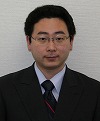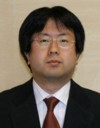Recognition, analysis and expression of images and letters are studied in the multimedia systems laboratory.
In addition, we devote positive cooperation in Japanese deep space exploration with Aizu Research Cluster for Space Science (ARC-Space), Research Center for Advanced Information Science and Technology (CAIST), and aim to be one of the kernel organizations in this research field near future.
The 3-D motion and the 3-D shapes of the object are analyzed, understood and expressed by computer from the images taken by multi TV camera or video camera in the study of computer vision and/or the 3-D stereovision. Our work has greatly contributed in Hayabusa project. The succession of landing on Itokawa by Hayabusa in November, 2005 owed to preciseness of 3D shape model of Itokawa by University of Aizu very much. And also development of HARMONICS (HAyabusa Remote MONItering & Commanding System) has contributed very much in operation.
We are also contributing in the next Asteroid exploration project, Hayabusa2, where a lab member is leading it as a principal investigator (PI).
Three lab members are also energetically contributing in KAGUYA (SELENE) project, the Japanese lunar exploring mission and playing a major role in LISM, the remote sensing camera system. The major research targets are centered on lunar shape recognition, such as lunar terrain analyses, crater counting, understanding and detailed whole lunar geographic mapping. Furthermore, they are engaged in analyzing the lunar mineral composition using the category classification technique from color information of lunar images and investigating the future moon surface land usage.
We are considering almost all kind of computer method to contribute lunar exploration, such as automatic crater counting, operation plan and log managing system, integration of lunar topological map from both Terrain camera (TC) data and Laser Altimeter (LALT) data, and so on. Furthermore, we are engaged also in space exploration programs in Japan including planetary and an asteroid exploration inquiry plan and contributing in research in lunar and planetary science.
In addition, we are supporting Japanese deep space exploration with our original conception and cooperating with both domestic and international organization, while the computer technology becomes necessary in this research field. In the on-line handwriting character recognition system, the fundamental study to use the handwriting letter as the input system of the computer is investigated. The character recognition is one of the most important fields on the image processing. And also collaborations with the Republic of Korea are implemented by this lab. Laboratory members have participated actively in scientific meetings, both in Japan and abroad. They have presented and participated in seminars, and in presentation of scientific results in fully refereed publications.





